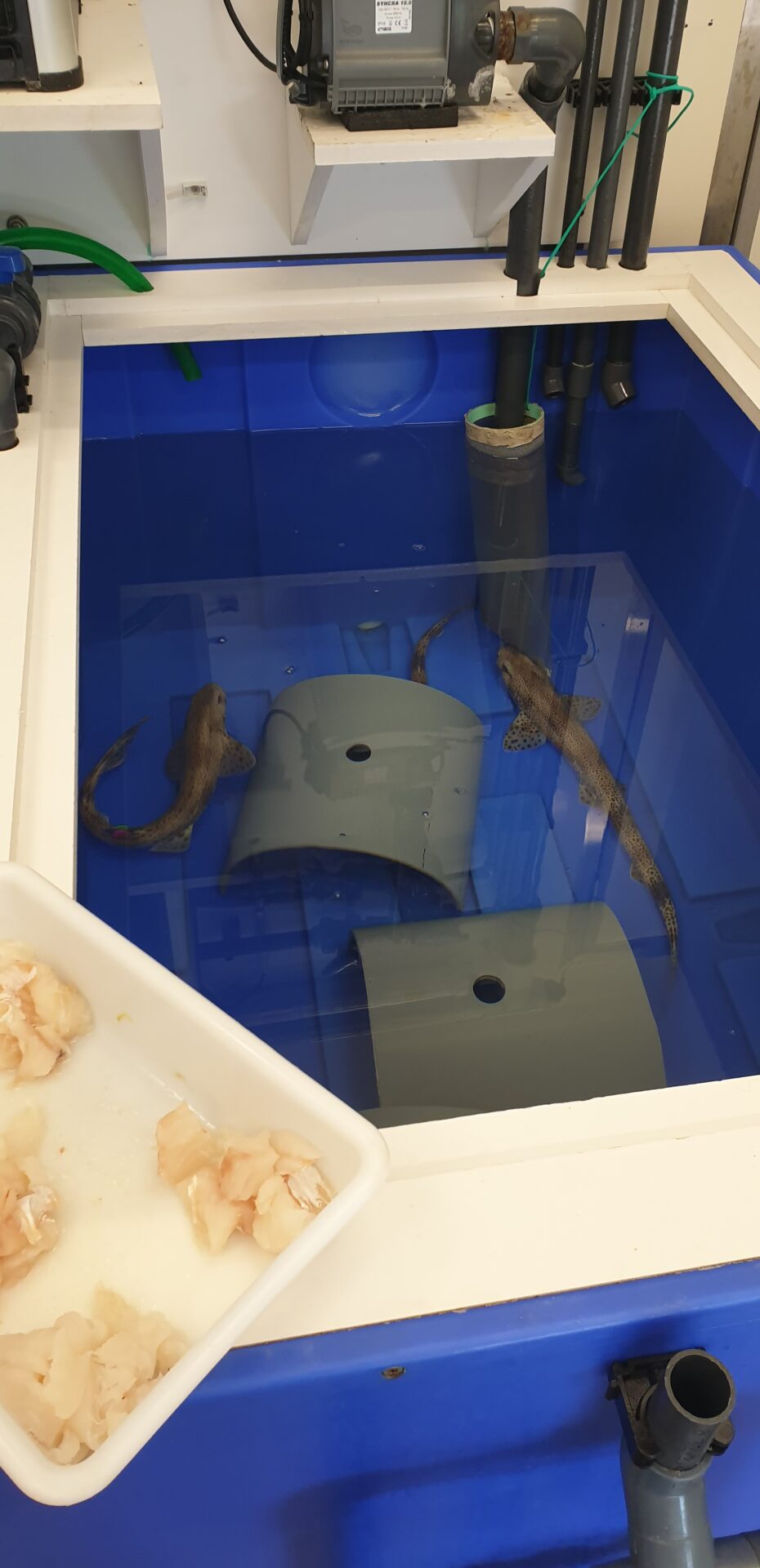Baby sharks, will your population continue to grow?
The first part of my project revealed the devastating effects of global warming and ocean acidification on the young life stages of small-spotted catshark. Two points were particularly puzzling: changes in metabolism and hatching success. While variations in metabolism can lead to variations in individual survival, growth and reproduction, hatching success has a direct impact on recruitment. This led us to go much further than planned and to raise questions about the future of small-spotted catshark populations.
To address this issue, we are developing a bio-energetic model (which describes processes related to metabolism) coupled with a population dynamics model. The first step was to measure dioxygen consumption rates as a function of temperature (a proxy for basic metabolism).
Small-spotted catshark of different sizes (and thus ages) were placed in different temperature conditions.

Measuring dioxygen consumption rates as a function of temperature (a proxy for basic metabolism) of small-spotted catshark of different sizes placed in different temperature conditions. Photo © Noémie Coulon
We then measured the amount of oxygen consumed by each individual as a function of temperature. How did we do this? By placing each individual in a respirometry chamber, a sort of hermetically sealed box, and measuring the decrease in the amount of oxygen in the box over a given period of time. Once a threshold level has been reached, the water in the box, and therefore the quantity of oxygen, is renewed and a new measurement can be taken. This non-invasive method allows the activity of individuals to be monitored for several hours.
Finally, the amount of oxygen consumed is related to the weight of the individuals by measuring and weighing them. A very short anaesthesia is applied to facilitate the handling of the individuals and limit the associated stress.

Noémie Coulon measuring a small-spotted catshark. Photo © Arthur Comte
